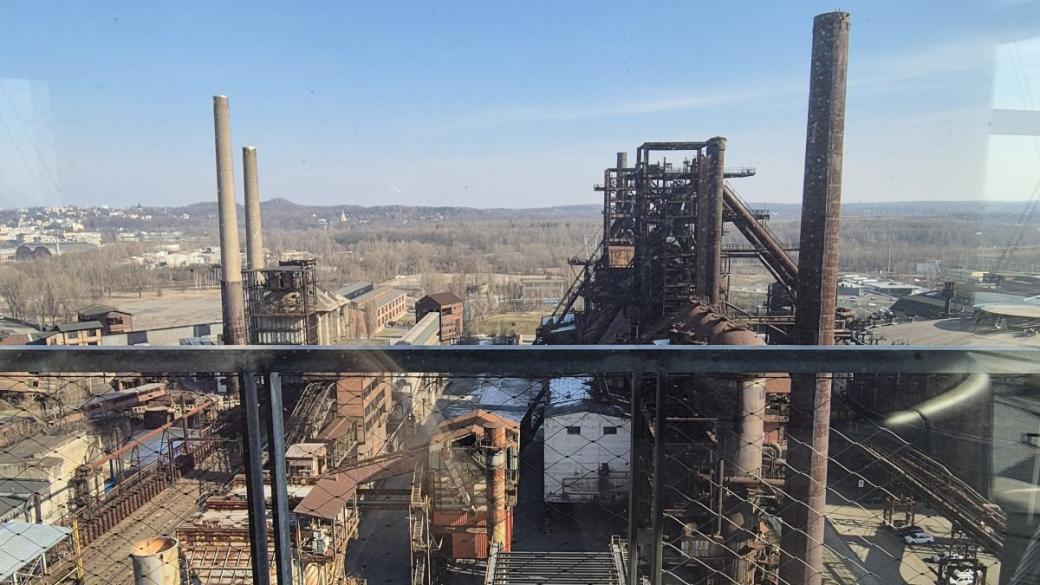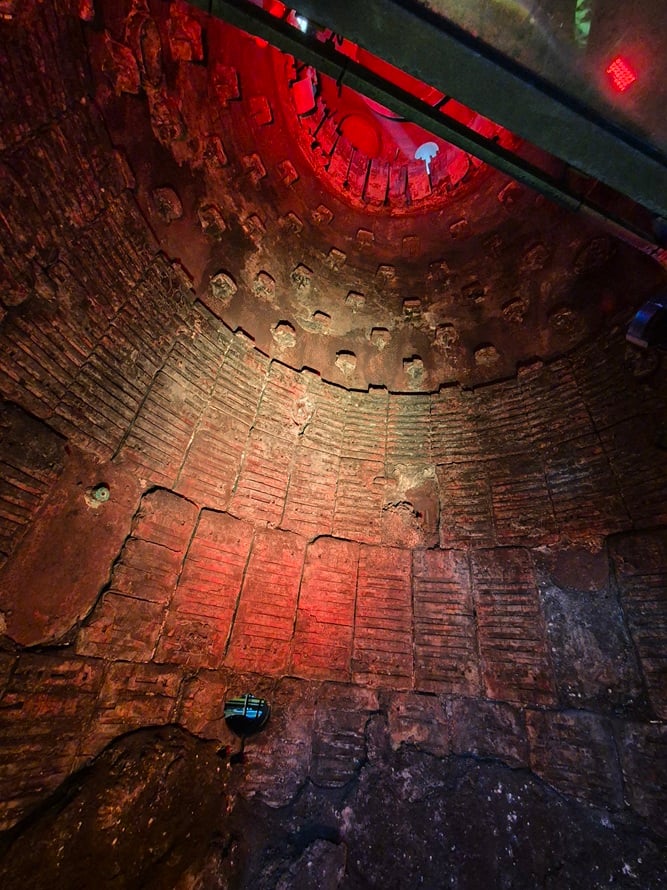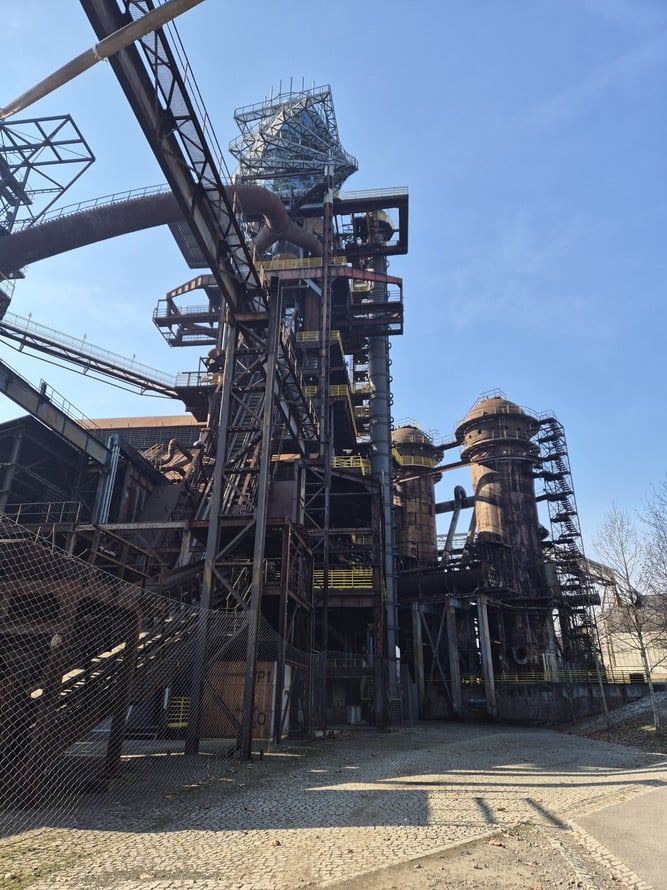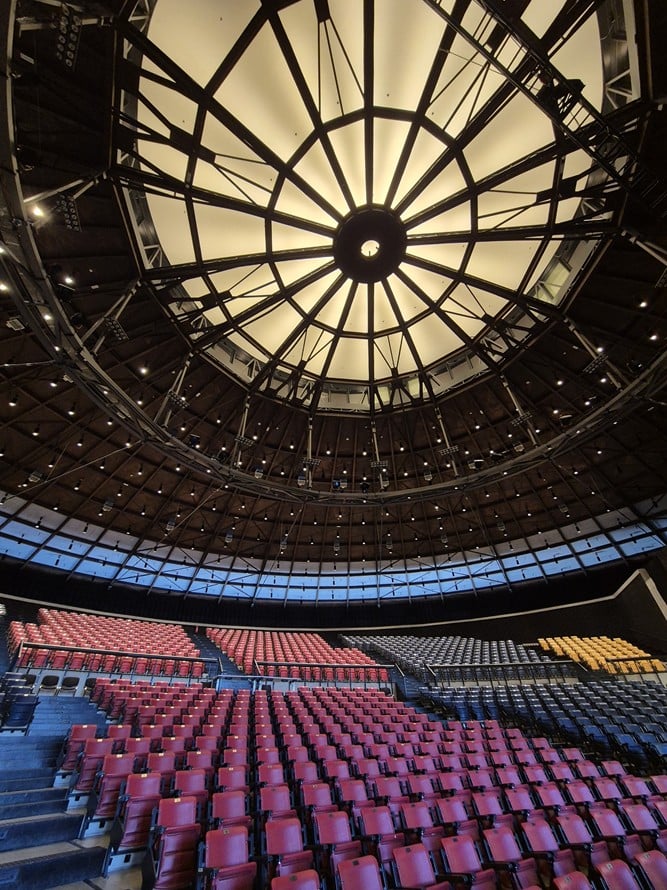Steel, Culture and Hydrogen: The Rebirth of the Lower Vitkovice Ironworks (gallery)
A story of bold vision, great perseverance and good coordination between businesses and local government, which rewrote the fate of this Czech symbol of the industrial age

© ECONOMIC.BG / Economic.bg
Where iron was once cast, ideas for a smarter, cleaner and more meaningful life are now being forged. The Lower Vitkovice (Dolní Vítkovice) industrial complex – the heart of the former heavy industry in the Czech city of Ostrava – is experiencing a second life as a cultural, educational and technological center.
Its unique transformation preserves the region's industrial memory, attracts thousands of tourists and sets new standards for sustainable urban development. And behind it all stands the vision of one man who refused to let the city's metallurgical heart fade away.
But that's not all. Future large-scale projects, such as the "City within a City" residential district for 15,000 people and the "Hydrogen City" innovative district, promise to make this complex an example of European innovation and development.
The long history of Lower Vitkovice
Nearly two centuries ago, in 1828, one of the most important industrial enterprises in Central Europe, the Vitkovice Metallurgical Plant, was established in the city of Ostrava. The initiative came from the Archbishop of Olomouc, Rudolf Habsburg, but the company's heyday came under the leadership of Salomon Mayer Rothschild after 1843.
The Rothschild family even built their own villa on the grounds of the complex. It served as an official residence and management center, but the financier himself never lived there.
The efficiency of production at that time made the complex unique. In an interview with Economic.bg, the chairman of the board of Vítkovice (ed. – the holding company that manages the complex), Rodan Broskevic, emphasized the importance of the site:
This is a national cultural heritage because it is the only place in Europe where the entire industrial process – coal mining, coke production and iron production – was concentrated in one place.”

All facilities are located on an area of 200,000 square meters and played a crucial role during World War I, supplying materials for the military operations of Austria-Hungary. During World War II, the plant was an important supplier of iron and steel for the German war industry.
The last pig iron production activities took place in 1998, after which the complex was closed due to serious environmental pollution, marking the end of the industrial era in the region.
Vision and perseverance
The transformation of Lower Vítkovice began in 2010, thanks to Czech businessman and visionary Jan Svetlik, whom Broskevic describes as “the father of the idea.” Svetlik bought the industrial complex from the state and began developing it with a clear goal – preserving the industrial heritage and creating a modern cultural and educational center. To this end, he partnered with the famous architect Josef Pleskot.
Nowadays, the ownership of the Lower Vítkovice complex is divided between the private investor Jan Svetlik, the non-governmental organization Dolní oblast Vítkovice (DOV) and the City of Ostrava. The company Vítkovice, as – an industrial holding company associated with Jan Svetlik, which provides technical expertise and support to DOV – is also actively involved in the transformation and development of the site. This is how a model of partnership between a business, the civil sector and local authorities is formed.

During the reconstruction process, 139 buildings were demolished to open up space for new functions.
We had huge challenges, such as pollution from coke production and the need to build an entirely new infrastructure," says Rodan Broskevic.
It is no coincidence that the complex is in the Top 5 most visited places by tourists in the Czech Republic. There is even an Italian restaurant on the territory of the complex, but there is plenty to see and learn for visitors.
The most impressive example of transformation is the Gong Hall. A former gas storage facility with a diameter of 70 meters and a height of 32 meters, it is now one of the most popular multifunctional concert and exhibition halls in the Czech Republic, featuring modern sound and lighting technologies.
Bolt Tower is another iconic structure. It is built on a former blast furnace and is 78 meters high. The tower currently serves as an observation deck and café, offering stunning panoramic views of Ostrava and the surrounding area.
The large science and technology center is located in a modern building and offers interactive exhibits dedicated to technology and science. The building, with its over 14,000 sq. m. area, provides opportunities for interactive learning for students and the general public.
The U6 Small World of Technology is set in a former power plant, where the original equipment is preserved as part of the museum exhibition. Visitors can view authentic machines and devices that reveal the development of industrial technology.

The Mining Museum in Landeck Park is located in an authentic mine, where visitors can touch original mining equipment and learn about the hard work of miners in the past.
Heligonka is a cultural space that serves as a stage for musical and theatrical performances. It is housed in a reconstructed historical industrial building, combining the past and contemporary cultural life.
A look to the future
The Lower Vítkovice complex has ambitious plans for expansion and development. Among the most impressive is the "City within a City" project - a modern residential district for about 15,000 people, Broskevic told Economic.bg. Its construction is planned to start in the second half of 2030.
This district will feature schools, kindergartens, hotels and wellness centers. The transport infrastructure will include new roads, tram lines, bike paths and pedestrian zones.
Another key project - the so-called "Hydrogen City" - will be built on a former slag heap, located on an area of 102 hectares near Lower Vítkovice. The idea is to create a self-sufficient district that uses hydrogen as its main source of energy. It will have homes, offices, scientific laboratories and public buildings powered by clean hydrogen energy.
The hydrogen will be produced through electrolysis using photovoltaic energy and other renewable sources. A research center will also be established to work on both the production and use of hydrogen.
The project is long-term and will be implemented after 2032, after the completion of the "City within the City" and the necessary rehabilitation of the terrain.
This will be a completely self-sufficient neighborhood that will produce and use hydrogen as an energy source," explains Broskevic.
For cities and regions in Bulgaria facing similar transformation challenges, Rodan Broskevic has clear advice: “Don’t be afraid. Think big and look for empty spaces in the market. The most important thing is to retain people by providing them with quality education, good culture and excellent infrastructure. Partnership between business and local authorities is absolutely necessary for success.”
I wish you to find your Jan Svetlik in Bulgaria, too.”
Co-Funded by the European Union. Views and opinions expressed are however those of the author(s) only and do not necessarily reflect those of the European Union or the Managing Authority. Neither the European Union nor the Managing Authority can be held responsible for them.
Tzvetozar Vincent Iolov


 Gloria Hristova
Gloria Hristova